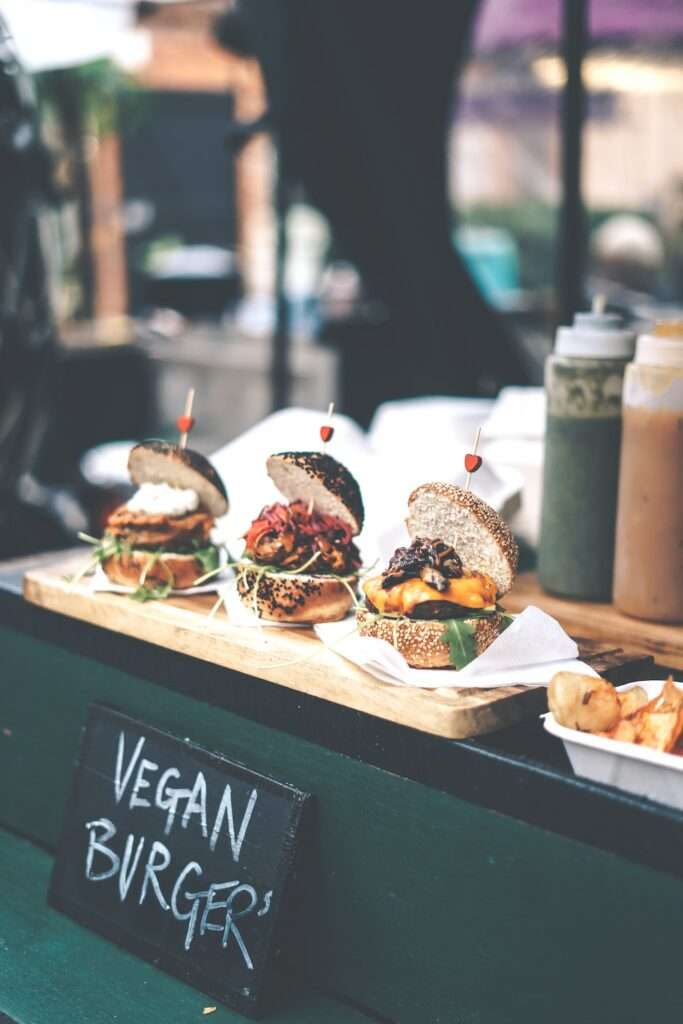As cultivated meat continues to earn regulatory approval and attract attention amid record-setting investments, questions about its long-term viability are on the rise. Is lab-grown meat really coming to your plate soon?
Bring up the topic of cultivated meat in a group setting and you’re likely to get all kinds of responses. It’s not only confusing, it’s controversial, sometimes even contentious stuff. What exactly is going on with meat “grown” in bioreactors? Is it meat? Is it safe? Is it healthy? Is it really capable of doing away with our dependence on industrialized animal agriculture? And, critically, is it ever really going to be on the menu?
Bring it up at that fictitious gathering — let’s say, a dinner party — and you’re sure to hear a few viewpoints. There’s the wide-eyed enthusiasm, likely from early adopters of other tech — Rivian or first-generation Tesla–drivers, perhaps. They’re the folks most likely willing and eager to try it, maybe even investing in it. You’ll also get the staunch critics who liken it to science fiction (the evil kind) and lump it in with genetically modified organisms aka “Frankenfoods”. And in this day and age, possibly even vaccine conspiracies a la “Is there a microchip in that lab-grown steak?” Then, there’s the fundamentalist, those who say food is sacred (they’re not wrong there). They may not have ever even heard of the tech until you brought it up, but they will undoubtedly insist that no-no-no, “food comes from the earth”, never mind the fact that, like George Carlin once reminded us, everything is natural — as in, comes from the earth — even if it’s a steak that circumvented the cow and was grown in a lab.
Are any of them right?
What is cultivated meat?
For the uninitiated, a brief, oversimplified food science lesson: cultivated meat is animal meat, but no animals are killed to produce it (except, some are — more on that in a bit). It is not a Beyond Burger or Impossible Nuggets made with plants to mimic the taste and texture of meat. It’s got no beans, no tofu, no mushrooms to make it meaty. It is, at a cellular level, meat; it is the same meat in nutrition, taste, and texture as meat cut from an animal. Only, it’s grown from a small tissue sample taken from a live animal — almost like getting one of those up-the-nose covid tests. And instead of needing to breed and kill billions of animals every year to do it, a small tissue sample from an animal holds all the promise of juicy steaks, sashimi, nuggets, and burgers.
Scientists have been growing tissue samples this way for decades. That part isn’t exactly new. But taking a few cells from a cow, pig, chicken, or fish and feeding them a liquid diet that keeps them alive and multiplying, producing meat that is indistinguishable from slaughtered meat, is very new. It’s also very expensive meat. And for the industry booming around it: very exciting meat.

It is, of course, far more complicated than that, but to understand its potential and its challenges, it’s enough of a baseline to move forward in considering whether or not cultivated meat can replace animal meat, and, perhaps, more significantly, whether or not it should.
Explaining the cultivated meat technology and its potential impact on our food system isn’t just fodder for interesting dinner party conversations, though. Cultivated meat (also known as lab-grown meat, cell-based meat, cultured meat, and once upon a time, clean meat) is big business — life purposes for some, even — with companies around the world securing billions in investments, groundbreaking regulatory approvals, and a growing roster of interest from the world’s top chefs, food scientists, and curious consumers.
Israel is now the first country in the world that has approved cultivated steak. Aleph Farms, which has raised more than $118 million to date, received the country’s first “No Questions” letter from Israel’s Ministry of Health for its cultivated beef manufacturing process. In the U.S., the USDA recently granted its first approvals for cultivated meat; Good Meat and Upside Foods both received the nods for their cultivated chicken last summer. Prior to that, only Singapore had approved Eat Just’s Good Meat chicken. But is the technology ever going to truly displace animal meat? We raise nearly 100 billion land animals and pull trillions of fish out of the oceans every year in the name of food. Can bioreactors really replicate all of that?
For proponents of the tech, it’s not so black and white.
Science: past, present, and future
“First, this is science,” Bruce Friedrich, founder and executive director of the Good Food Institute (GFI) says. “Doing what was previously considered impossible is (a big part of) the entire business of science. See electric vehicles, cheap solar panels, cheap wind energy, the Human Genome Project, semiconductors, and so much more. Breakthroughs and moonshots are tough, but they’re (of course) not impossible. In all these cases, while a lot of people couldn’t see the path and decided that meant there wasn’t one, others happily charged forward and created the possibilities they had envisioned.”
His examples are sound. Need a more relatable example? Try explaining black-and-white silent movies or a Walkman to a ten-year-old. Or why phones we can now take underwater had to be tethered to walls for an entire century. George Jetson-esque technology is all around in ways most of us only dreamed of a few decades ago. And all of these technologies we now take for granted were deemed impossible at one point. So were those relic technologies that preceded them, too.

As one of the biggest supporters of alternative proteins, be it via plants or labs, GFI says that commercial-scale production of cultivated meat is indeed on its way, and it will eventually reach price parity with animal meat. Critics say the GFI report left out key costs related to production and underestimated the expense and complexity of building facilities capable of producing cultivated meat at scale. Data sets compiled in 2021 by the Effective Altruism Forum show that only nine out of 273 predictions on the market timelines for cultivated meat were resolved correctly. Seventy-five have resolved incorrectly, and another 40, were also expected to resolve incorrectly.
“Overall, the state of these predictions suggest very systematic overconfidence,” wrote Neil Dullaghan, a senior staff researcher at Rethink Priorities. “Cultured meat seems to have been perpetually just a few years away since as early as 2010 and this track record plausibly should make us skeptical of future claims from producers that cultured meat is just a few years away.”
Cultivated meat investing
Investors see a different outcome, though. More than $366 million was raised by cultivated protein companies in 2020 alone — an increase of more than six times over 2019’s numbers, according to GFI. The number of companies in the space is now more than 100. The USDA funded a Tufts University research facility with a $10 million grant. Traditional meat producers, like Cargill, are investing in it, too. Funding is making it possible for these companies to get off the ground and focus on the various aspects of the technology, including efforts to bring the price down.
Prince Khaled bin Alwaleed, founder and CEO of KBW Ventures, has invested in plant-based, cultivated meat, and other food tech. He is an investor in TurtleTree, which uses cell-based technology to create dairy. It debuted the first-ever animal-free lactoferrin earlier last year. He says we have to look at the progress that’s been made already to gauge where the technology is going.

“The timeline to delivering cultivated meats to the market at scale seems daunting to some, but if you consider the leaps we’ve already made in terms of the scientific landscape and the business landscape it’s actually not,” he told Ethos.
Prince Khaled says we’re just at the beginning in terms of funding for cultivated meat, and as more money comes in, the tech will advance. “Between plant-based proteins and fermentation, this sector specifically is the least capitalized now with a lot of room for growth,” he says. “I see ample investment dollars rolling in from institutional investors and traditional meat companies alike in the coming months; this type of capital fuels development.” He says that he expects to see cultivated meat in new markets “very soon.” It’s one of the reasons his KBW Ventures has invested and re-invested in companies, as in the case of TurtleTree. “We’re going to market alongside these future-makers,” he says.
Cultivated meat’s future
Technology has and will always get better, and, crucially, in ways we can’t imagine. Albert Einstein frequently dismissed his genius, saying the secret to his success was simply staying with problems longer than his contemporaries. And in the distracted modern world (indeed a byproduct of technology, too), that approach to problem-solving can often seem like the biggest impasse on the road. We’re so keen to just move on — or in some cases, turn back. But for those who linger a little longer with the world’s biggest problems, a way through those roadblocks usually becomes visible.
If the biggest roadblock to taking cultivated meat mainstream is cost, then that’s what the industry’s most determined experts will focus on fixing first, says Friedrich. They already have. In Singapore, where San Francisco’s Eat Just received the world’s first regulatory approval to sell its cultivated chicken in 2020, the company sold its nuggets for about $17 an order. This is way down from the price of the first lab-grown burger, which was cooked in 2013 and cost an estimated $300,000 to produce.
The only real problem with price, though, is that the true cost of meat isn’t reflected at retail. It’s far more abstract and complicated. That’s due primarily to monstrous subsidies that keep meat (and egg and dairy) prices unrealistically low. Friedrich has long been advocating for government funding and support of cultivated meat — just like the government props up the conventional meat and dairy industries. If there’s going to be a meaningful shift in our food system — including reaching the Biden administration’s methane targets — it’s going to have to include the same assistance offered to the protein industries at large.

The need for that shift is becoming increasingly urgent. Livestock production and fishing are wreaking havoc as traditional protein production is destroying ecosystems, poisoning air and waterways, overconsuming resources, and is linked to some of the biggest health and labor crises in history.
Do we need cultivated meat?
Friedrich says when he started GFI nearly a decade ago, he assumed what was the consensus at the time: We’re way too early for cultivated meat to go commercial. “It’s decades away if it’s possible at all,” Friedrich says. “My first question to them was, ‘can cultivated meat be cost-competitive with commodity meat?’ I made it clear (and I still make it clear) that our goal is to find out what’s true and to proceed accordingly,” he says.
GFI is solely motivated by making the food system more sustainable and ethical; the group is agnostic in its efforts to displace animal agriculture. Friedrich says if cultivated meat were not promising, the organization would just “focus more or entirely on plant-based meat and fermentation.” It’s entirely likely that there will be other solutions we’ve yet to even imagine that GFI will also lend its support to in the not-too-distant future.

“It’s because we think cultivated meat has a strong chance of viability that we include it in our strategy,” Friedrich says. “The more GFI’s scientists and partners within life sciences and biomanufacturing companies and academia (all over the world) delve into this field, the more convinced they become that it can be done at costs below that of conventional meat.”
Cultivated meat challenges
One of the biggest challenges for the commercialization of cultivated meat is the use of FBS — fetal bovine serum — the main source of food for the cells. It poses ethical questions, certainly, but it also puts a roadblock in the sustainability mantra touted by the industry at large. To access the fetal tissue, cows must be impregnated and then slaughtered to produce it. This keeps livestock production tethered to the cultivated meat production chain. If a cow must be raised, impregnated, and killed to grow meat in a bioreactor, does it make more sense to just eat that slaughtered cow? Through a sustainability lens, that would seem to be the case.
Recent newcomer Omeat, which has raised more than $40 million, is “harvesting” its growth medium from live cows. It operates a cow sanctuary of sorts about 100 miles east of Los Angeles where it hooks cows up to IVs on a weekly basis to source the plasma for its cultivated meat.
Companies are working on more ethical, sustainable, and affordable solutions, though. Mosa Meats, the cultivated meat pioneer behind that first $300,000 cultivated beef burger a decade ago, said it switched to a new growth medium recently that was able to bring down costs 88 percent. “What we have done is pretty breathtaking,” Laura Jackisch, the head of the Fat Team for Mosa Meats told Time Magazine. “Figuring out how to make a replacement [for FBS] that’s also affordable means that we can actually sell this product to the masses.”
Food systems expert Errol Schweizer, former VP of Grocery at Whole Foods, has questions about other issues with cultivated meat. He says we have to look at all possibilities, certainly the common practices in conventional livestock production.

“Will growth hormones be involved in the cultivation of these products, and if so, would the final consumer-facing product contain hormone traces or residue?” he asked in Forbes. Schweizer is among a growing number of critics over the tech who argue in favor of plant-based meat instead of cultivated meat if for no other reason than our health. While a bioreactor reduces the need to raise and slaughter a cow, it doesn’t reduce the risk of heart disease and cholesterol the same way a fiber-rich meal does. It is meat, after all, not kale.
There are other issues, too. “What are the types of molecular scaffolds that such products will be built on and will such ingredients be transparent to consumers?” Schweizer asks. “Will they be animal-derived, GMO-derived/plant-based or plastic/synthetic? How will they influence the allergenicity of the final product if derived from common allergens such as soy, corn, crustaceans, fungi or insects? How will insect or crustacean-derived scaffolding affect Kosher or halal certification?”
Concerns over the safety of cultivated meat have seen legislative efforts to ban it entirely. Florida and Arizona have taken steps to block its approval in the U.S. Italy’s parliament passed a ban last November.
Schweizer also questioned the funding coming into the cultivated meat industry. He also pointed out that placing our food system under the purview of nascent technology is risky, especially if that comes at the expense of other food system solutions.
“I think folks who are advocates for [cultivated meat] should be very wary of the type of money that’s coming into that space, and what not only the returns that will be asked for, but the potential ownership, governance and control of those technologies will be within the next two to three or four to five years,” Schweizer said.

“Once you know those investors, and they’re accountable to their limited partners, they’re accountable to their shareholders, you know, they need to show that return, and then also the fact that it’s high-risk money and that not all those companies will make it. But then, it’s also an investment that’s not going into other aspects of the food system.”
Other challenges put cultivated meat’s viability further into question, such as the risk of contamination inherent in working with live cells. Just as we’re all too familiar with how quickly a virus can spread amongst humans, so too could it infect lab environments. The bigger the cultivated meat factory, the more difficult it is to ensure secure environments.
But compare that to the challenge of keeping more than 90 billion land animals relatively disease-free before slaughter. Foodborne illnesses are not uncommon — the result often of sick animals in a supply chain designed for speed, not disease prevention. If we can say our animal-based food system, for all of its risks, is mostly safe, it would seem sterilized food labs would be even safer, even at their worst.
‘Code Red’ for humanity
But the promise of cultivated meat isn’t about acing your next physical or erasing cognitive dissonance about eating animals. This is about animal agriculture and what it has done and will continue to do to the planet. A recent study found a 50 percent reduction in animal products is critical to keeping global temperatures from rising more than 1.5° Celsuis. And if humans can have their steak and eat it, too, even if the timeline for that dinner is still a few years away, shouldn’t we at least try?
“We’re at ‘code red for humanity’ on climate change,” Friedrich says. “The U.N. says that on our current trajectory, we’ll need to produce 70 to 100 percent more meat by 2050, the vast majority of that in developing countries.”

“Literally no one has a plausible solution for how we stem that tide, other than alternative meat production methods; simply educating people for the past 50 years hasn’t even cut meat production in the U.S. and Europe (it’s way, way up in both places),” Friedrich says. “Maybe plant-based and whole biomass fermentation offer all the food tech we need, but GFI’s scientists think that cultivated meat (like so many tech innovations before) is promising,” he says. “Climate NGOs, governments, and the science community should go all-in on making it happen.”
Maybe cultivated meat isn’t the end goal, but it’s certainly seeming like an important stop on the road toward a food system better angled at meeting the needs of our changing planet. It seems the door is too wide open to turn back now anyway. To borrow from an ironically appropriate adage: there are many ways to skin a cat. And in the case of meat’s future, it doesn’t have to involve the cat — or cow or pig or chicken — at all.
Related on Ethos:


